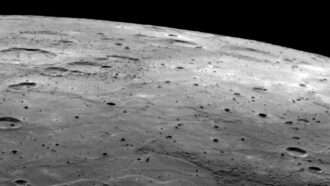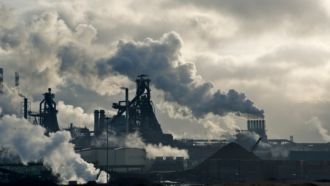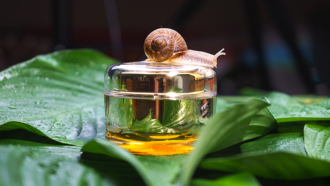MS-PS1-1
Develop models to describe the atomic composition of simple molecules and extended structures.
-
 Materials Science
Materials ScienceLet’s learn about diamond
Diamond is born under extreme heat and pressure inside Earth and elsewhere in the universe.
-
 Earth
EarthTiny gemstones show when Earth’s crust first started moving
Chemical hints observed in zircons suggest when the important process of plate tectonics first took off.
By Nikk Ogasa -
 Planets
PlanetsMercury’s surface may be studded with diamonds
Billions of years of meteorite impacts may have transformed much of Mercury's graphite crust into precious gemstones.
By Nikk Ogasa -
 Tech
TechA new device uses atoms’ quantum weirdness to peer underground
Quantum sensors like this one could monitor magma beneath volcanoes or uncover archaeological artifacts.
-
 Chemistry
ChemistryNew process can transform urban CO2 pollution into a resource
Researchers have developed a liquid metal that breaks down carbon dioxide in the air, converting it from a climate threat into a valuable raw material.
-
 Environment
EnvironmentWidely used pesticides may threaten Earth’s ozone layer
Data show a major class of long-used “eco-friendly” copper chemicals unexpectedly react with soil, making gases harmful to Earth’s protective ozone layer.
-
 Planets
PlanetsNo, organic molecules alone don’t point to life on Mars
These carbon-based molecules, found in a meteorite, may reflect merely a mixing of water and minerals on the Red Planet over billions of years.
By Nikk Ogasa -
 Chemistry
ChemistryExplainer: What are fats?
A fat molecule's three long chains of carbon and hydrogen atoms repel water, stash energy and keep living things warm — even in the bitter cold.
-
 Materials Science
Materials ScienceLet’s learn about glass
Unlike the atoms in other solids, the atoms in glass don’t exist in an orderly crystal structure. They’re more jumbled up, like the atoms inside liquids.
-
 Chemistry
ChemistrySnail slime + gold could boost the power of sunscreens and more
These two strange ingredients could make skin-care products that are better for both our skin and the environment.
-
 Chemistry
ChemistryExplainer: What is a metal?
Metals can bend and pull without snapping, and conduct electricity. The reason: Their atoms tend to lose electrons to neighboring atoms.
-
 Chemistry
ChemistryScientists Say: Silicon
The chemical element silicon is used to make everything from bricks to cookware to electronics.